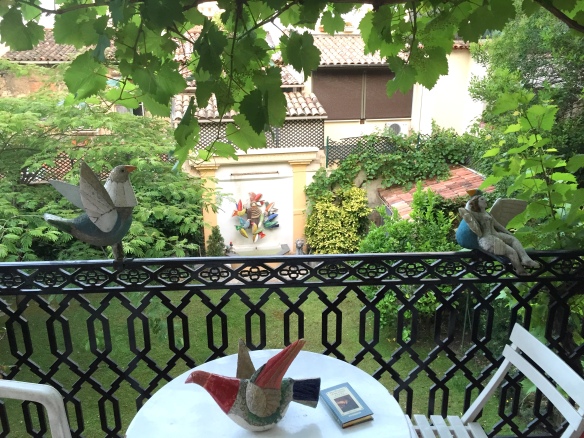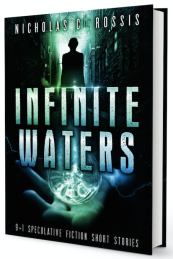Today I’m really happy to be interviewing a blogger a lot of you know: Sue Archer, from Doorway Between Worlds. She has recently launched her new freelance editing business, and today she shares with us some tips and ideas on how writers can select the right editor and editing service for them. I’ve already worked with Sue on a short story and will be working with her on the sequel to The Viper and the Urchin once it’s ready, so I’m very excited to share some of Sue’s expertise with you today.
 First of all, thanks for taking part, Sue, and for being on the blog today! Tell us a little about yourself and your editing background.
First of all, thanks for taking part, Sue, and for being on the blog today! Tell us a little about yourself and your editing background.
Thanks for having me on your blog, Celine! It’s great to have the opportunity to chat with you about editing and share some tips with your readers.
It’s so hard to talk about yourself, isn’t it? I’ll do my best. Here’s my story: When I was young, I dreamed of becoming a fantasy novelist, and pursued a Masters degree in English. Like most people who graduate from school, I had no clue about what to do next, but I did know I had to find a job. So I put my fiction writing dream on hold for a while. Instead, I worked in various communications-related roles (technical writer, communications trainer, marketing strategist) where I did a lot of writing and editing.
Gradually, I realized that helping other people write well was even more exciting for me than creating my own stories. So I took courses in editing from Ryerson University’s graduate publishing program, joined Editors Canada, and began applying all the editing skills I had learned over the years towards a new role — freelance editor. Now I help self-publishing authors to polish their writing, and it’s been such a rewarding experience for me.

For anyone interested by the way, the photo to the left is a heavily edited page of Flaubert’s Un Coeur Simple. Goes to show, even literary masters need editing — which is quite reassuring for us mere mortals!
So, Sue, can you give us an overview of the different types of editing there are?
This is such an interesting question, because there are many different terms for editing out there — they vary widely between countries and even between editors. This can make it very hard for writers to know exactly what they are getting. So here’s my first tip — make sure you find out what the exact scope of the “editing” is when you are signing up for editing services.
In general, there are four different levels of editing.
The first level is what’s normally called developmental, structural, or substantive editing. This is a comprehensive hands-on edit of the manuscript content — the “big picture” editing. It involves reorganizing the structure to improve the flow and identifying where content can be added, removed, or changed. In the case of developmental editing, it can also mean working with a book proposal and helping the author write the content from scratch.
The second level is known as stylistic editing. While the substantive edit is at the manuscript level, the stylistic edit is at the paragraph level. In a stylistic edit, paragraphs and sentences are edited to improve transitions, clarify meaning, and eliminate jargon. You may not see this term very often, since this work is usually combined with either the substantive edit or the copy edit.
The copy edit (or line edit) is the third level of editing. The purpose of a copy edit is to eliminate errors and establish consistency throughout the manuscript. This involves editing for grammar, spelling, and punctuation. It can also mean checking the manuscript for internal consistency, including the consistency of facts (such as place names and timelines).
The final level is proofreading. This term in particular gets misused a lot, because writers often say they need a “proofread” when what they really need is a copy edit. In traditional publishing, a proofread is the final read-through of the proofs before the work is published. At this point, the manuscript has been typeset and is ready for printing. The proofreader makes sure any changes made by the copy editor were added in correctly, the coding has been done correctly, and that page layouts, page breaks, running heads, and other design-related items are all in place. Many editors do not proofread, since it’s a very specific design-related task.
 How should a writer decide which editing service is going to be right for her?
How should a writer decide which editing service is going to be right for her?
This one can be hard to figure out, since the writer may be too close to the manuscript to know exactly what it needs. I know many of my editing colleagues get requests for a “light copy edit” and discover that the manuscript needs a lot of substantive work for it to be publishable. As you can imagine, this makes for a challenging conversation!
A great way to figure out what your draft needs is to pay for a manuscript assessment. This is a service where the editor writes a report outlining the strengths and weaknesses of the manuscript and recommends changes. The editor can point out structural, stylistic, and grammar-related issues. This is perfect for writers who are more hands-on and would like to do most of the work themselves before paying for any actual editing.
For the editing services themselves, here are some questions you can ask yourself to help you determine what you need:
How confident are you about what you know? If you’ve learned about story structure and characterization and practiced it in your writing, then you may not need a substantive edit. If you know your grammar inside and out, then you may not need a heavy copy edit (although you will still need some form of copy edit, since we all miss errors in our own work — even editors!).
Are you focused on accessing a market for your work? A qualified substantive editor can recommend changes based on your genre and target audience to help you gain more readers or attract a publisher, if those are your goals.
Are you open to substantial changes in your story? If you’d prefer to have your content largely untouched, and you are only trying to prevent errors, then a copy edit is the way to go.
Whatever you decide, make sure that you and your editor agree on what is needed before the work starts.
 Finding the right editor is equally as important as deciding on the kind of editing a manuscript needs, so how should writers go about choosing the right editor for them? Any tips on things to look out for, or questions to ask?
Finding the right editor is equally as important as deciding on the kind of editing a manuscript needs, so how should writers go about choosing the right editor for them? Any tips on things to look out for, or questions to ask?
The number one thing you need to find out is whether your editor is qualified to edit your particular manuscript. Having an educational background in English, for example, is not the same as knowing how to edit. Confirm whether your editor has taken any editing training or completed any editing certifications. Editors who take their work seriously are often affiliated with professional associations, such as Editors Canada, the Editorial Freelancers Association (U.S.), or the Society for Editors and Proofreaders (UK).
Ideally, you want someone who has editing experience within your genre, particularly if you are looking for substantive or stylistic editing.
I’d also ask for references or testimonials from previous clients. Probably the best way of finding a qualified editor is through word of mouth. If you like someone’s work, ask who edited it and whether the author would recommend that editor.
Another thing to think about is whether your editor acts like a professional service provider. Think about what you typically look for when hiring anyone to do a service for you. Editing is no different. Here are some questions to consider:
- Is the editor’s online presence consistent with what you would expect from a professional business owner?
- Is the editor responsive to your questions?
- Does the editor ask you questions to help determine your specific needs?
- Are services clearly outlined, with terms and conditions provided in some form of contract for your review and approval?
Ideally you want to have a collaborative relationship with your editor. So the final consideration is whether you “click” with the editor on a personal level. You need to picture yourself working with this person. Do you like the tone of the emails you receive? Does the editor seem genuinely interested in you and your work?
To confirm that you’ve picked the right person, I would recommend asking for a sample edit before committing to anything. Most editors will edit a small sample of your work either for free (which I currently do) or for a nominal fee. A sample edit will help you confirm whether your editor is a good fit for you.
 Editing is generally the biggest initial outlay for an independent author. It can be a bit daunting spending all that money before the book is even published, and some people may struggle with that cost. Any suggestions on ways authors and editors can help reduce that cost?
Editing is generally the biggest initial outlay for an independent author. It can be a bit daunting spending all that money before the book is even published, and some people may struggle with that cost. Any suggestions on ways authors and editors can help reduce that cost?
The most important thing you can do (as an author) is to self-edit your manuscript thoroughly before submitting it for professional editing. The less time it takes someone to edit your manuscript, the less cost to you. So instead of rushing out to get editing done when you finish your writing, let your draft sit for a while and then go back to it. You’ll have the objectivity to spot things you missed the first time around (or the second, or the third). And please don’t forget to spell check!
A manuscript assessment is an excellent lower-cost way of getting feedback from an editor if you can’t afford a full substantive edit. Another alternative is a mentoring service. I offer one for writers who are looking for feedback on a particular section of a manuscript or have editing-related questions.
The editing contract is a key tool for controlling your costs. Verify what is included in the service (and confirm it through the sample edit). Some editors charge based on the time they spend on the manuscript rather than by the word or the page. Check to see what the maximum fee will be under the contract, and how things will be renegotiated if more work is needed. For a long-term project, pay attention to cancellation terms. If you are not satisfied with the service as things progress, can you cancel with partial payment?
Editors can help to reduce costs by being up front about all fees and discussing individual needs with the client. A flexible editor will adapt the work to the author’s budget by reducing the number of editing passes or focusing only on items the author is particularly concerned about.
A final word of caution on the topic of cost: You’ll find there is a wide range of fees that are charged for editing. Obviously you will want someone who will fit your budget, but I wouldn’t necessarily go with the lowest bidder. Some editors charge a very low fee per word. This means that the editor needs to work very fast to make a living. And you don’t want an editor who will rush through your manuscript.
How can a writer know whether her manuscript is ready for editing? Do you have any tips or suggestions on how authors can self-edit before sending their manuscript to an editor — any books or resources you could share with us?
I’d be sure to take advantage of beta readers and writing critique groups who can provide you with feedback. Solicit opinions from writers you admire and trust. Your editor should not be the first person who provides you with feedback on your manuscript.
Find out your weaknesses and work on them. If you’re not confident in your grammar, for example, take a current grammar course or refer to a resource like Grammar Girl, the Purdue OWL, or Grammatically Correct by Anne Stilman.
There are a few good books out there on self-editing. The best one I have seen so far (and recently reviewed) is Self-Editing for Fiction Writers by Renni Browne and Dave King. Another popular resource is Revision and Self-Editing for Publication by James Scott Bell.
I also recommend using a style sheet when editing your work. A style sheet is a place for capturing stylistic decisions on items such as spelling, capitalization, and punctuation. I have a style sheet template on my website that you can use. A style sheet will help you confirm that you’ve applied the same style consistently throughout your manuscript. In addition to helping you edit, it will save your editor effort (which can reduce your editing costs) and will help you avoid any misunderstandings with your editor about your stylistic preferences.
As a very quick aside for anyone reading this, when Sue told me about her template I immediately downloaded it and started using it for the book I’m currently writing. I had never thought of using something so structured, but as a Fantasy writer who makes up a lot of names for places and people, having some formal method to track spellings is proving to be a big help in reducing typos. For anyone not sure how to use stylesheets, Sue’s article on her website is very helpful.
Thank you for sharing that tip Sue! Anything else you would like to share?
As you can probably tell, I could go on and on about the whole topic of editing. 🙂 I would like to share one final piece of advice: Try to think positively about feedback (which is hard, I know) — and don’t be afraid to ask questions if you don’t understand the reasons for that feedback.
Speaking of questions, I’m happy to answer any questions about editing in the comments. You can also contact me directly — I’d love to hear from you.
And thanks again, Celine, for hosting me on your blog. I had a great time!
Well thank you for sharing all that information with us, Sue, that was really helpful!
Connect with Sue:

REQUEST A QUOTE/FREE SAMPLE EDIT



 This is a must for any mythology and fairytales/folktales lover. In the Night Garden starts off with a little girl who has been cast out into the Palace Garden of a sultan. Around her eyes are two large, inky stains, which are in fact made of tiny writing — said writing containing magical tales that coil around her eyes.
This is a must for any mythology and fairytales/folktales lover. In the Night Garden starts off with a little girl who has been cast out into the Palace Garden of a sultan. Around her eyes are two large, inky stains, which are in fact made of tiny writing — said writing containing magical tales that coil around her eyes.



 In a future where the ice caps have melted, the water has risen, and temperatures are soaring, London has become half submerged swamp-land in a new Triassic age. Prehistoric reptiles swim through lagoons in front of the now abandoned and inundated Ritz, the walls of which are covered by creeping tropical plants.
In a future where the ice caps have melted, the water has risen, and temperatures are soaring, London has become half submerged swamp-land in a new Triassic age. Prehistoric reptiles swim through lagoons in front of the now abandoned and inundated Ritz, the walls of which are covered by creeping tropical plants. I’m developing a bit of a thing for beautifully illustrated children’s books. This is one gorgeous book that most definitely deserves to be bought in hardback. The illustrations are by Chris Riddell, in ink with gold highlights.
I’m developing a bit of a thing for beautifully illustrated children’s books. This is one gorgeous book that most definitely deserves to be bought in hardback. The illustrations are by Chris Riddell, in ink with gold highlights.


 I came to Wodehouse (the creator of the infamous duo, Jeeves and Bertie Wooster) rather late, but I am making up for lost time. Wodehouse is brilliantly funny, manages to capture a certain aspect of britishness superbly well, but more to the point, the writing is absolutely delicious. It’s the kind of book that makes me want to stop every few sentences to read a line aloud.
I came to Wodehouse (the creator of the infamous duo, Jeeves and Bertie Wooster) rather late, but I am making up for lost time. Wodehouse is brilliantly funny, manages to capture a certain aspect of britishness superbly well, but more to the point, the writing is absolutely delicious. It’s the kind of book that makes me want to stop every few sentences to read a line aloud.































 Most of the quotes are real, and taken from either the
Most of the quotes are real, and taken from either the  Then, the war between Scorpio and the Argonites is based on the actual war between Sparta and Argos. The Spartans had noticed that Argos was mimicking their commands, so used it to their advantage to crush them. When Argos’ warriors fled, they hid in a sacred woods. Unable to enter, the Spartans lured the survivors out by falsely suggesting that their families had ransomed their safety. The Spartans then killed them one by one as they emerged from the woods.
Then, the war between Scorpio and the Argonites is based on the actual war between Sparta and Argos. The Spartans had noticed that Argos was mimicking their commands, so used it to their advantage to crush them. When Argos’ warriors fled, they hid in a sacred woods. Unable to enter, the Spartans lured the survivors out by falsely suggesting that their families had ransomed their safety. The Spartans then killed them one by one as they emerged from the woods.

